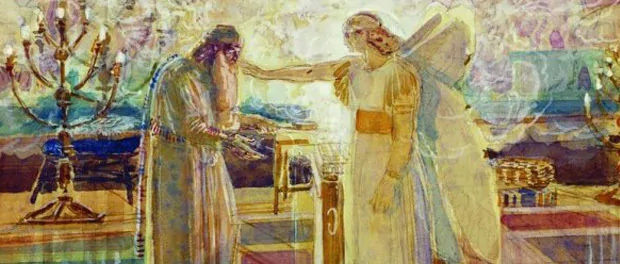
Zechariah
https://bibleproject.com/guides/book-of-zechariah
Bible Study Title: “Zechariah: The Prophet of Hope and the Coming King”
Purpose
To understand the message of Zechariah within its historical context, explore its theological depth, and reveal its prophetic vision of the Messiah who restores Israel and reigns eternally.
I. Historical and Political Background
A. Setting
- Time Period: Zechariah prophesied around 520–480 BC, during the reign of Darius I of Persia (cf. Zech. 1:1).
- Context: The Jews had returned from Babylonian captivity (538 BC) under Cyrus the Great’s decree, but the rebuilding of the Temple stalled due to opposition and discouragement.
- Contemporaries: Zechariah ministered alongside Haggai to stir the people and leaders—Zerubbabel (governor) and Joshua (high priest)—to rebuild the Temple.
B. Political Climate
- Judah was a small province under Persian rule, with limited autonomy.
- The people were disheartened: Jerusalem lay in ruins, the Temple incomplete, and their former glory seemed gone.
- Persian tolerance allowed religious restoration, but national independence was a distant dream.
- Zechariah’s visions infused hope, promising divine intervention and the future Messianic kingdom.
II. Structure and Themes of Zechariah
|
Section |
Chapters |
Focus |
|
I. Visions of Restoration |
1–6 |
Eight visions of encouragement and rebuilding |
|
II. Symbolic Acts |
7–8 |
Fasting turned to joy, return to righteousness |
|
III. Prophecies of the Messiah |
9–14 |
Future King, suffering Shepherd, ultimate triumph |
Major Themes
- God’s Sovereignty – He rules over history and nations (Zech. 1:8–11).
- Repentance and Renewal – “Return to Me… and I will return to you” (Zech. 1:3).
- Restoration of Worship – Rebuilding the Temple symbolizes spiritual revival.
- Messianic Promise – The coming of the Branch, the Priest-King, and the Humble Savior.
- Final Victory of God – The Lord will reign from Jerusalem (Zech. 14:9).
III. Key Verses and Insights
1. Call to Repentance
“Return unto Me, saith the Lord of hosts, and I will return unto you.”
— Zechariah 1:3
- The foundation of all restoration begins with repentance.
- God’s invitation echoes through every revival in Israel’s history.
2. The Vision of Joshua and the Branch
“Behold, I will bring forth my servant the Branch.”
— Zechariah 3:8
- “The Branch” (Heb. tsemach) signifies the Messiah, sprouting from David’s line (cf. Isa. 11:1, Jer. 23:5).
- Joshua, the high priest, symbolizes cleansing and renewal through divine grace.
- A type of Christ, who both cleanses and intercedes for His people.
3. The Golden Lampstand and Two Olive Trees
“Not by might, nor by power, but by my Spirit, saith the Lord of hosts.”
— Zechariah 4:6
- God’s work (the Temple and His kingdom) advances not through human strength but by the Spirit.
- The olive trees represent Joshua and Zerubbabel, foreshadowing the priestly and kingly offices united in the Messiah.
4. The King of Peace
“Behold, thy King cometh unto thee: he is just, and having salvation; lowly, and riding upon an ass.”
— Zechariah 9:9
- Fulfilled in Matthew 21:4–5 and John 12:15, this prophecy points directly to Jesus’ triumphal entry into Jerusalem.
- The Messiah is humble, peaceful, and righteous—a stark contrast to earthly kings.
5. The Pierced One
“They shall look upon me whom they have pierced, and they shall mourn for him.”
— Zechariah 12:10
- This verse prefigures the crucifixion of Christ, quoted in John 19:37.
- The mourning signifies Israel’s future national repentance and recognition of Jesus as Messiah.
6. The Shepherd and the Stricken
“Smite the shepherd, and the sheep shall be scattered.”
— Zechariah 13:7
- Cited by Jesus in Matthew 26:31, fulfilled at His arrest and the disciples’ scattering.
- Reveals the suffering aspect of Messiah’s mission.
7. The Lord Reigns
“And the Lord shall be king over all the earth.”
— Zechariah 14:9
- This climactic prophecy points to the Second Coming of Christ, when He will reign universally.
- The nations gather at Jerusalem, and God’s glory fills the earth.
IV. Jewish Theological Perspective
- Rabbinic tradition often viewed Zechariah’s visions as symbolic of Israel’s purification and redemption.
- The Branch is interpreted in the Targum as “the Messiah.”
- Jewish commentators (like Rashi) saw Zechariah’s prophecies as both encouragement for rebuilding the Temple and a distant picture of ultimate restoration.
- Modern Jewish scholarship often reads Zechariah as a dual prophecy—applying to the return from exile and a future Messianic age yet to come.
V. Christian Messianic Fulfillment
|
Zechariah Prophecy |
Fulfillment in Jesus Christ |
|
The Branch (3:8; 6:12) |
Jesus, the Righteous Branch (Luke 1:78; Jer. 23:5) |
|
The Humble King (9:9) |
Triumphal Entry (Matt. 21:5) |
|
The Betrayal (11:12–13) |
30 pieces of silver (Matt. 27:9–10) |
|
The Pierced One (12:10) |
Crucifixion (John 19:37) |
|
The Smitten Shepherd (13:7) |
Jesus’ arrest (Matt. 26:31) |
|
The Coming King (14:4–9) |
Second Coming (Rev. 19:11–16) |
VI. Application and Reflection
- God Restores What’s Broken – The same God who rebuilt Jerusalem restores lives today.
- God’s Spirit Empowers His Work – Success in ministry or personal life is through His Spirit, not human effort.
- Christ Is Both Priest and King – He intercedes and reigns—our salvation and authority are in Him.
- Hope Beyond Discouragement – Zechariah shows that divine purpose continues even after seasons of delay.
VII. Closing Verse for Meditation
“Not by might, nor by power, but by my Spirit, saith the Lord of hosts.”
— Zechariah 4:6
Let this truth settle in the heart of every believer—the victory of God’s plan depends not on man’s strength but on the Holy Spirit working through yielded vessels.
